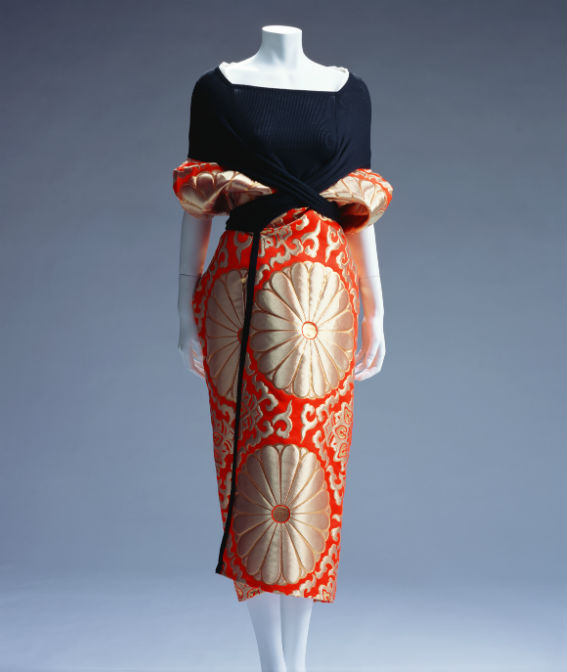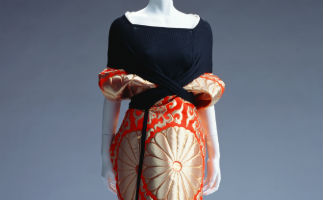
NEWARK, N.J. – A new exhibition at the Newark Museum will showcase the impact of Japanese garments, textiles, design and aesthetics on global fashions created by internationally recognized designers such as John Galliano, Sarah Burton for Alexander McQueen, Iris van Herpen and Issey Miyake. Opening Oct. 13, “Kimono Refashioned: 1870s-Now!” will feature more than 40 garments by more than 30 Japanese, European and American designers.
Co-organized by the Kyoto Costume Institute and the Asian Art Museum of San Francisco, the Newark Museum is the exclusive East Coast venue for this exhibition, where it will remain on view until Jan. 6.
The kimono, the long robe with wide sleeves traditionally worn with a broad sash as an outer garment, has influenced global fashion since Japan opened to the world in the late 19th century. Motifs used to decorate the kimono, its form and silhouette, and its two-dimensional structure and linear cut have all been refashioned into an array of garments. Kimonos revealed new possibilities in clothing design and helped to lay the foundations of contemporary clothing.
Featuring works from the world-renowned collections of the Kyoto Costume Institute and the Newark Museum, Kimono Refashioned features couture gowns, men’s wear, shoes and ready-to-wear joined by paintings, prints and textiles that reflect both exacting and impressionistic references to kimono.
“Kimono Refashioned will present dynamic and visually stunning manifestations of inter-cultural conversations between Japan and the West from the late 18th century through the lens of fashion,” said Interim Co-Director Ulysses Dietz. During its run at the Newark Museum, the show will incorporate 20 pieces from the museum’s Japanese art collections, including eight garments and textiles.
The first section of Kimono Refashioned displays oil paintings by William Merritt Chase and Jacques-Joseph James Tissot from the late 1800s as early examples of the influence of kimono. The next section accents Japonism in fashion from the late 19th century to the 1920s, when new garments were inspired by the motifs, shapes and cuts of kimono. The third and largest portion of the exhibition explores contemporary fashion and its use of kimono’s flatness and silhouette, along with cutting-edge Japanese technologies–contemporary and historic–that were employed for weaving, dyeing and decorating textiles. The final section demonstrates how Japan continues to inspire the world of fashion through popular design, including manga and anime.
From a 19th-century gown decorated with Japanese cherry blossoms, irises and chrysanthemums, to Iris Van Herpen’s 2016 dress woven from single threads of polyester measuring one-fifth the diameter of a human hair, to recent works by Issey Miyake, Junya Watanabe and Nozomi Ishiguro, Kimono Refashioned makes clear that kimono has had a strong presence in fashion and continues to be a source of ideas for designers worldwide.


